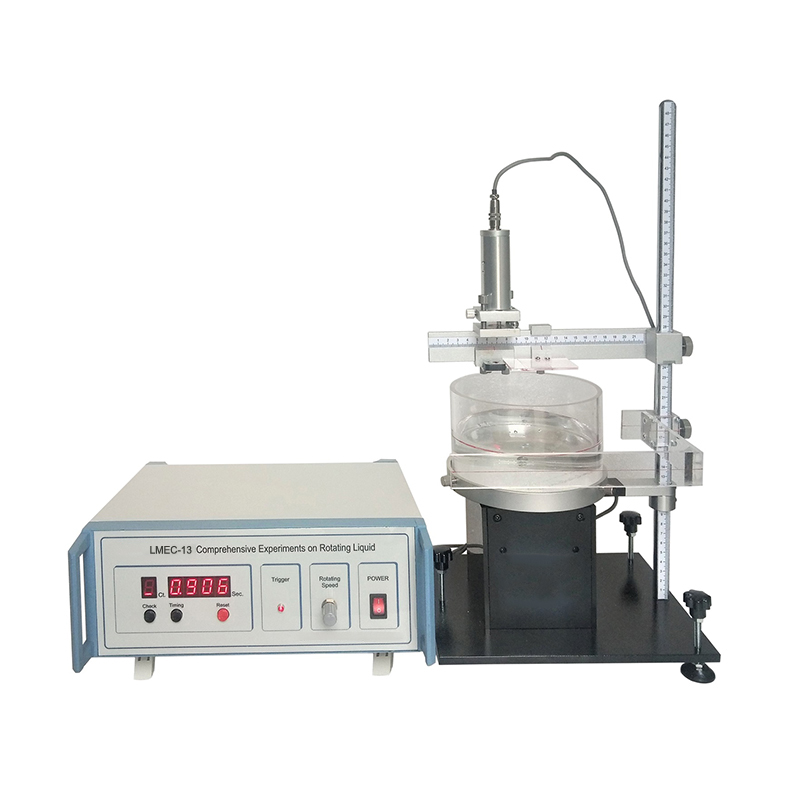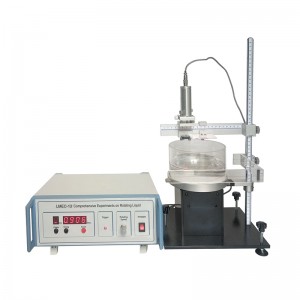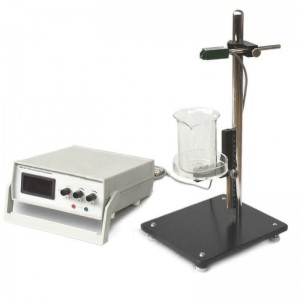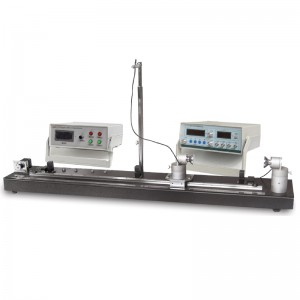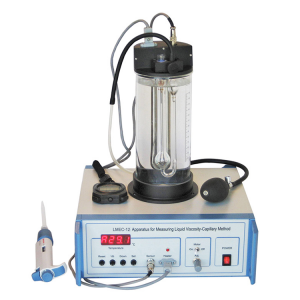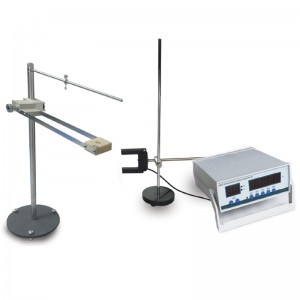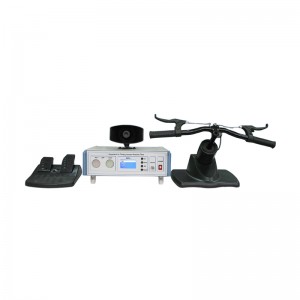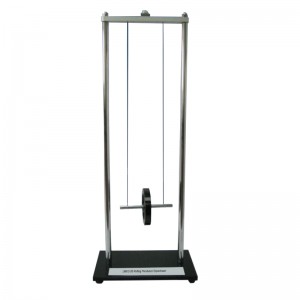LMEC-13 Comprehensive Experiments on Rotating Liquid
Experiments
1. Measure gravity acceleration g using two methods:
(1) Measure the height difference between the highest and the lowest points of the surface of rotating liquid, then calculate gravity acceleration g.
(2) Laser beam incident parallel to the rotation axis to measure surface slope, then calculate gravity acceleration g.
2. Verify the relationship between focal length f and rotational period t according to the parabolic equation.
3. Study concave mirror imaging of rotating liquid surface.
|
Description |
Specifications |
| Semiconductor laser | 2 pcs, power 2 mw
One spot beam with diameter < 1 mm (adjustable) One divergent beam 2-d adjustable mount |
| Cylinder container | Colorless transparent plexiglass
Height 90 mm Inner diameter 140 ± 2 mm |
| Motor | Speed adjustable, max speed < 0.45 sec/turn
Speed measurement range 0 ~ 9.999 sec, accuracy 0.001 sec |
| Scale rulers | Vertical ruler: Length 490 mm, min div 1 mm
Horizontal ruler: Length 220 mm, min div 1 mm |
Write your message here and send it to us



